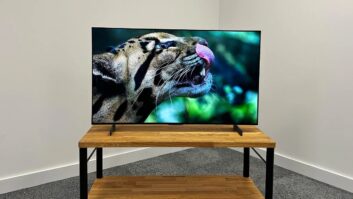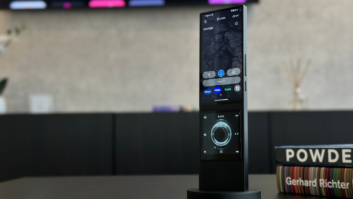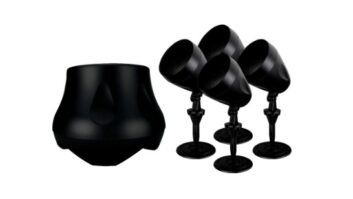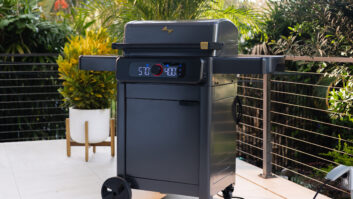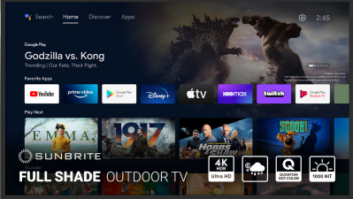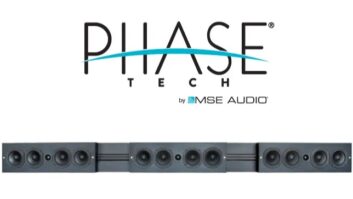Despite recent divestitures by its parent company in plasma and LCD manufacturing operations, Fujitsu General’s North American sales unit is pushing forward with new, advanced plasma models, and a high-end front projector.
Fujitsu’s national training director, David Fink, said the company will ship in the later third quarter an 80W-inch plasma display. A prototype model shown at International CES drew strong reactions from its custom A/V dealer base, he said. The panel will feature 1,080p resolution and Fujitsu’s Advanced Video Movement II (AVM-II) image processing. Pricing has not been determined, Fink said.
Fujitsu’s parent recently announced that is selling its stake in the joint Fujitsu Hitachi Plasma (FHP) operation to Hitachi, but the U.S. sales operation has long sourced various sizes of plasma glass from other suppliers. Glass for the new 80W-inch models will come from Samsung, which is manufacturing the panel under the direction of Fujitsu’s engineers, Fink said.
The new panel will join Fujitsu’s growing plasma lineup, which currently includes 42W-inch, 55W-inch and 63W-inch screen sizes. All but the 63W-inch model employ the new AVM-II video processing circuitry.
In January, the company began shipping its previously announced three-chip LCD front projector with 1,080p high-definition resolution capability.
The projector, which carries a $24,999.99 suggested retail price, uses 1.3-inch LCD panels, and is positioned as a high-performance value-option against three-chip 1,080p DLP projectors.
The projector uses a two-piece configuration with a smaller light box than DLP models and large array of input options on the separate selector box. The selector box also houses the unit’s video processor.
“We will pursue the custom A/V client for our projector, which is the same niche that we seem to do very well in with our plasma offerings,” Fox said. “They enjoy our 55W and 63W-inch plasma, but they also want that event-based experience in addition to the casual use of the plasma.”
Fink said recent price drops for the technology helped direct Fujitsu’s course.
“When front projectors were selling for $100,000 for this level of performance, we didn’t think the market was right for us, but now that it has fallen to the $25,000 to $30,000 price range, we think the market has come around,” he explained. “At this point we are not interested in offering lower-priced front projectors. That would put us up against single-chip DLP projectors, and we don’t feel the customer we are targeting is interested in that quality level.”
Meanwhile, Fujitsu’s parent company is exploring next-generation large-screen options to plasma and LCD panels. Fink said Fujitsu engineers have shown small prototype displays based on plasma tube array technology. The technology is designed to produce screen sizes larger than 80W-inches that can be practically shipped and installed.
“Our goal is to continue with what we offer in plasmas now — the bright accurate emissive display — but dispense with the mechanical limitations of plasma. If you make the thing 80 or 100 inches you are geometrically increasing the challenge of getting it installed in the client’s home,” Fink said.
Instead of using the two-piece glass assembly used in conventional plasma systems, plasma tube array displays take the glass and shape it into thin red, green and blue tubes fitted tightly together. Each tube will make a perfectly formed sub-pixel filled with phosphor and gas that can be lit up. The three red, green and blue sub-pixels (each measuring 1 mm) fit together to form a single 3 mm square pixel. This will produce a panel lighter in weight than conventional plasma and more efficient in operation, using a third to one-quarter the electricity of plasma.
Fink said the technology is expected to reach the market for commercial sales in about two years, and should be ready for the home theater market about two years after that.
Fink said Fujitsu is also preparing to introduce its first CableCARD-enabled plasma displays, possibly later this year. The company showed a 50W-inch digital cable ready prototype at CES.
But Fink said the company isn’t sure its customer base will require plasma displays with fully integrated CableCARDs and ATSC tuning.
“We expect a lot of custom A/V clients will continue using value-added set-top boxes and two-way interoperability,” Fink said, adding that Fujitsu is studying the market for CableCARD products before making a commitment to adding integrated products in a broad way.
As for direct-view LCD TV, Fink said Fujitsu tested a 32W-inch prototype at CEDIA last fall, but found “it’s a different customer than ours. We didn’t get a very strong reaction to getting into that business. Our customers want larger screen sizes and high-definition resolution.”







